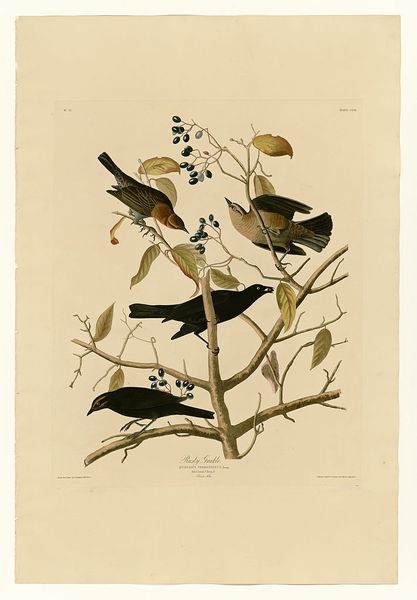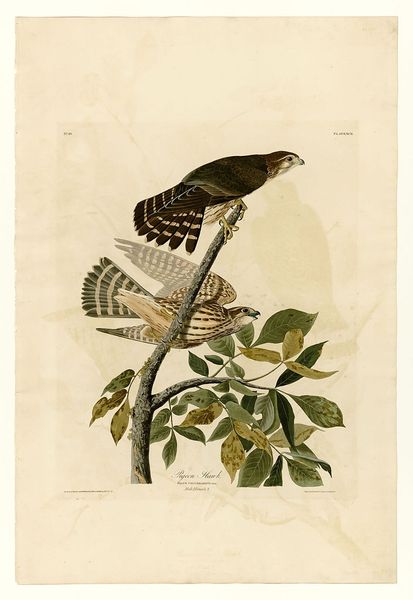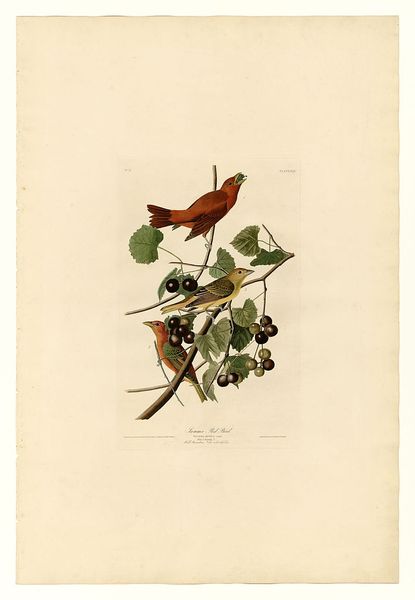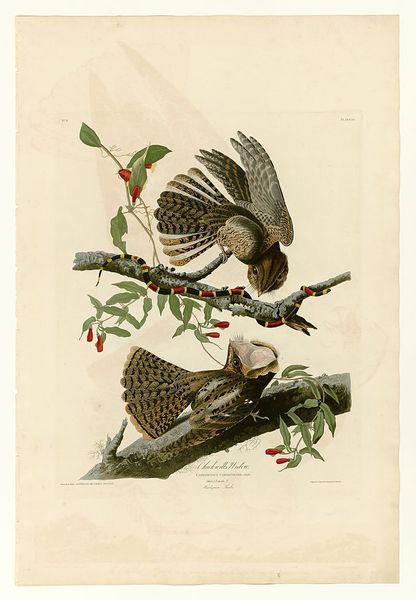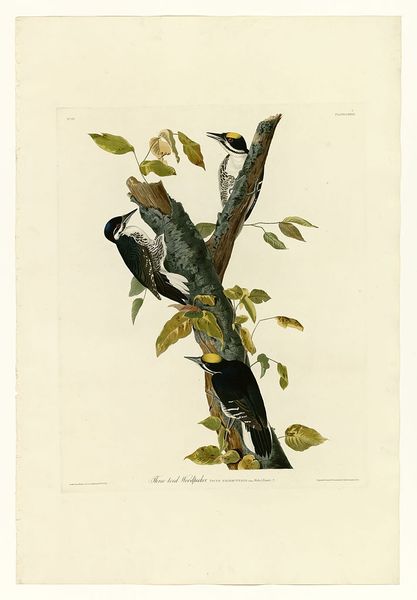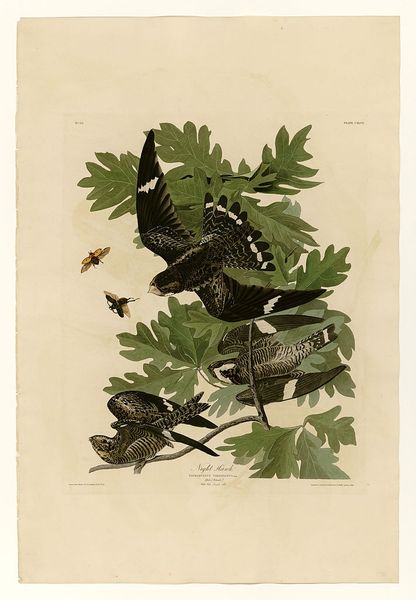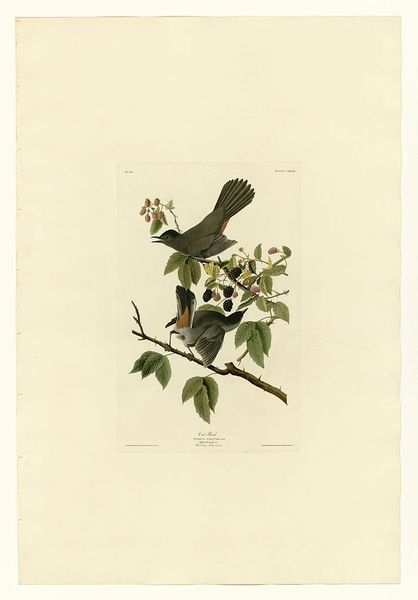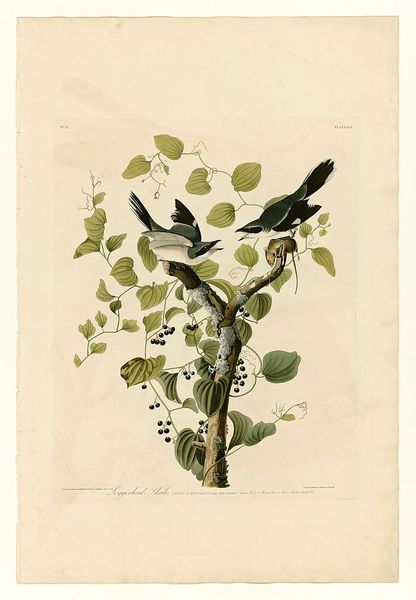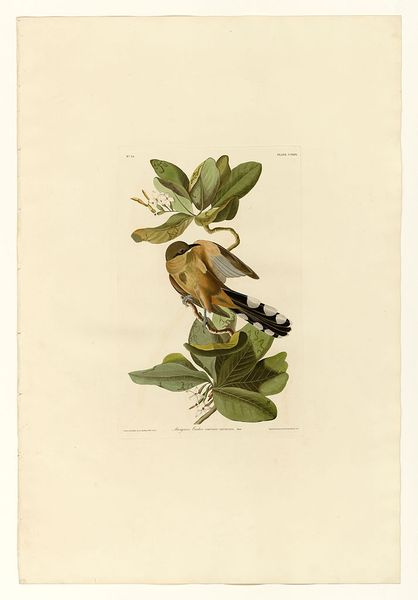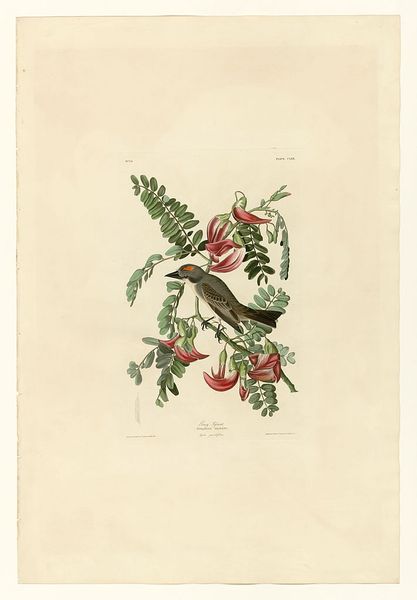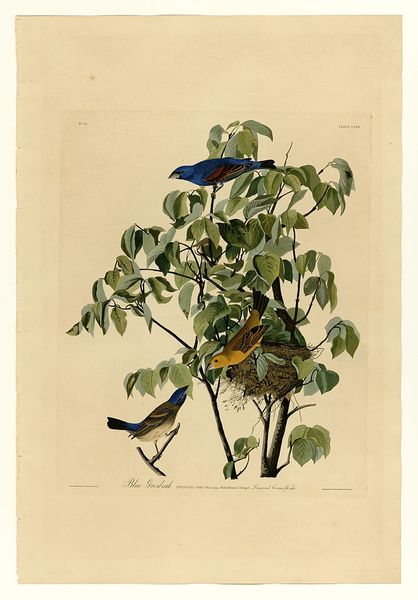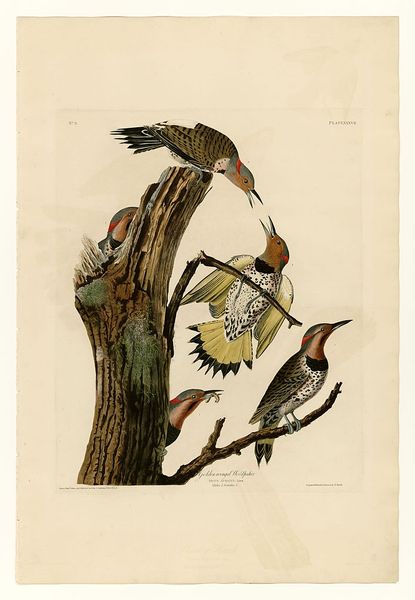
painting, watercolor
#
vegetal
#
portrait
#
painting
#
landscape
#
flower
#
watercolor
#
plant
#
botanical drawing
#
watercolour illustration
#
botany
#
botanical art
#
watercolor
Copyright: Public domain
John James Audubon created this print of Downy Woodpeckers using a combination of watercolor, pastel, graphite, and ink. He then transferred this to a large copper plate using a technique called etching. Look closely at the layering of lines and colors: the texture of the woodpeckers' feathers, the botanical details, the light and shadows. Audubon began with a precise outline, then built up tones and textures through careful application of watercolor washes and pastel. The final print retains all the immediacy of his original observation, but it was laboriously produced. The scale of Audubon's project, "Birds of America," was massive. Each print required an immense amount of skilled work, from the initial drawing, to etching the plates, to the hand-coloring of each individual impression. This was, in a way, an early form of industrial production, where teams of artisans collaborated to create a luxury product for a growing market. Appreciate, as you look, the intense work that went into making what might at first seem like just a pretty picture.
Comments
No comments
Be the first to comment and join the conversation on the ultimate creative platform.
